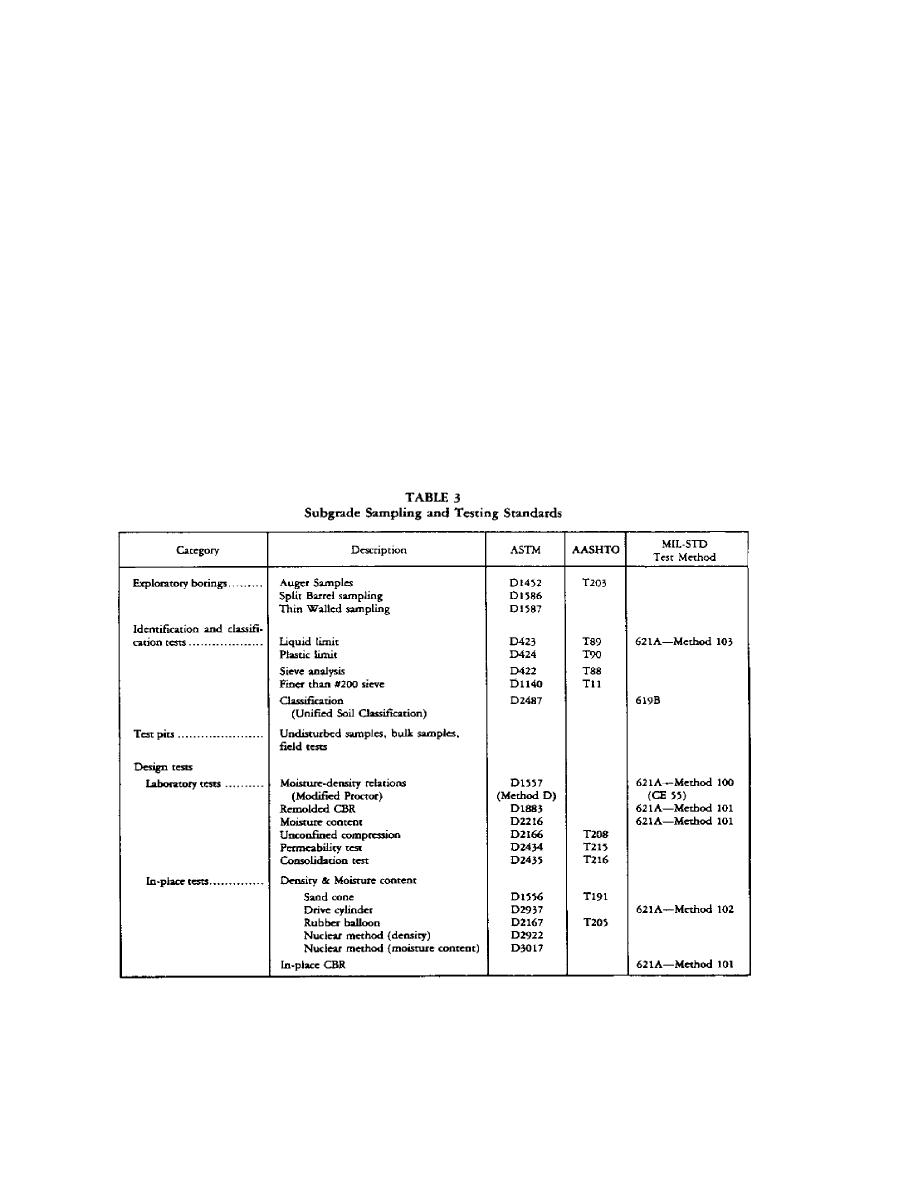
for soil exploration and subgrade testing. In general, preference should be
given to the use of ASTM test standards.
a. Soil Classification. Perform Atterburg Limits and grain size
distribution tests to classify the soil. Use the Unified Classification System
according to MIL-STD 619.
b. Moisture-Density Relationships.
(1) Standard Proctor. For the design of secondary roads and parking
areas, use the standard Proctor test (ASTM D698) to determine the moisture-
density relationship of subgrade soils.
(2) Modified Proctor. The Modified Proctor Compaction Test (ASTM D1557)
should b used when designing primary roads or other heavy duty pavement areas.
(3) In-Place Density. From test pits, during exploration, determine the
in-place density of the subgrade using the sand-cone method given by ASTM
D1556. For subgrade compaction control the inplace density may be determined
using nuclear gage procedures. Refer to ASTM D2922.
c. CBR. Use the California Bearing Ratio (CBR) test to determine the
strength of the subgrade soil. Procedures for in-place testing and laboratory
testing are given in MIL-STD-621. For a discussion of the selection of CBR
values for use in pavement design, see Section 4.
7


 Previous Page
Previous Page
